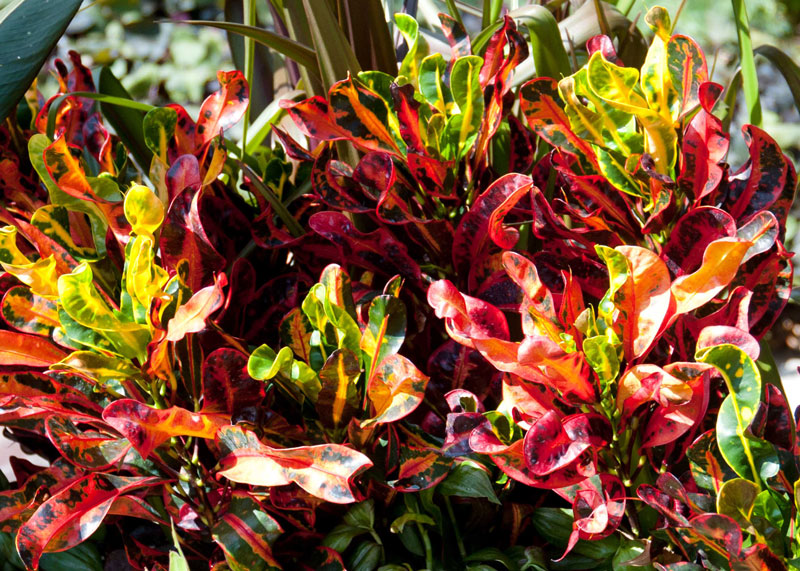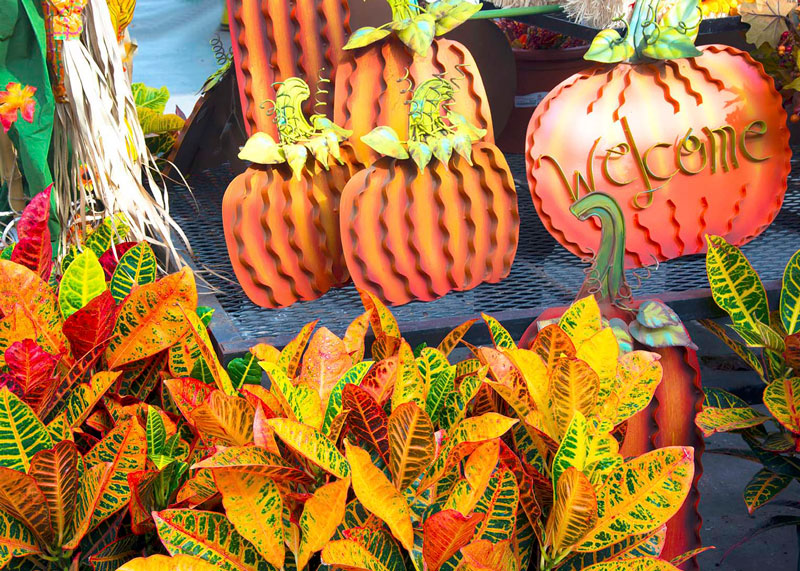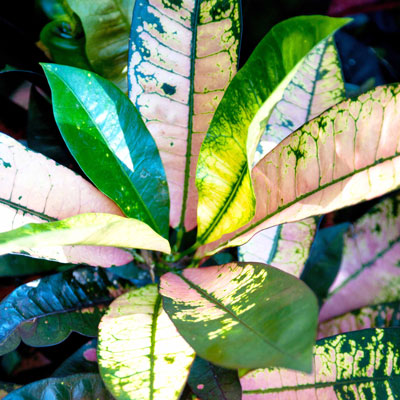Colorful Crotons Are in the Mainstream
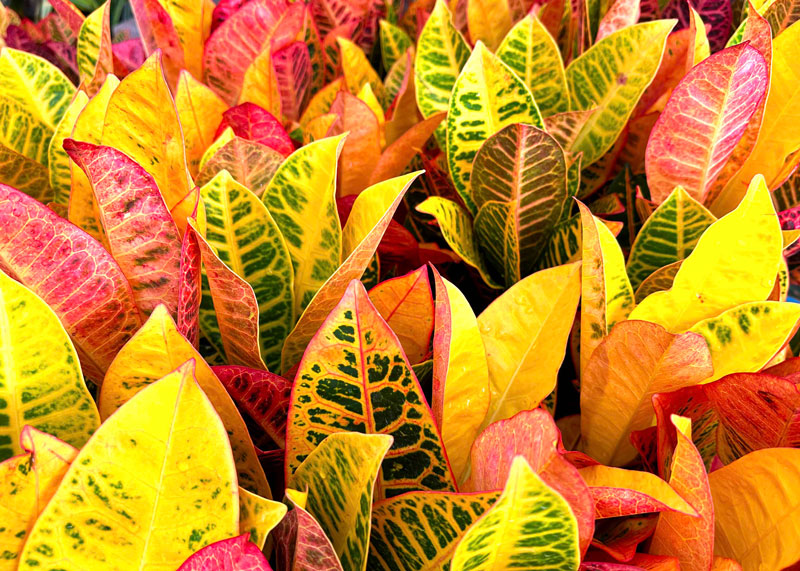
I was a teenager. It was late ‘50s or 1960, and Prof. Alfonse deWerth ran those TAMU Floriculture greenhouses. He didn’t especially want a high school kid walking through them, so I looked in from the outside. He and my dad (Range Science professor at A&M) taught in the same building across the street from the greenhouse, and Dad saw me more than once peering longingly into the greenhouse from the outside.
That’s where I saw my first cutting-grown (non-blooming) coleus. And chenille plants (flowering sisters to copper plants). And flowering kalanchoes – he was doing that research to bring them into flower in their off-season. And bromeliads. They were some of his favorite plants. And crotons. Beautiful crotons.
But I wasn’t allowed to go in there, so I looked through the vents and went home and looked through my books. Every once in a while, I found one in a nursery in Houston. I’d buy it and grow it. I loved crotons, and I still do
Obviously, a lot of other people love them as well, because they’ve come into everyday gardening here in Texas. To a degree that’s true all summer long. We use them in large patio pots, and landscape contractors even plant them in beds. Then, as fall approaches, we use them in our Halloween decorations.
Of course, crotons are totally tropical. Any temperature at or below 32F will kill them, so you either need to live in a frost-free area or you need to keep them in pots so you can shuttle them into and out of a protected location.
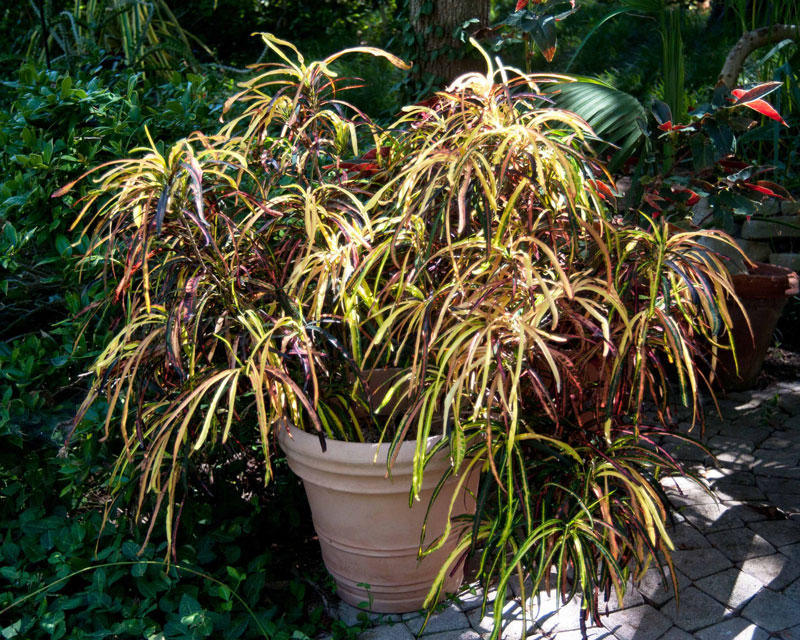
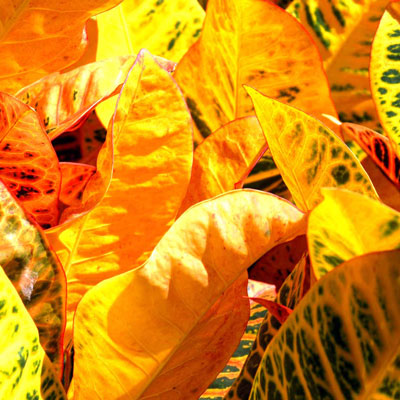
What you might want to know…
If you’re going to try your hand at growing this exciting group of colorful plants, here are random facts that might be of interest.
• Botanical name: Codiaeum variegatum var. pictum
• Common name: Croton
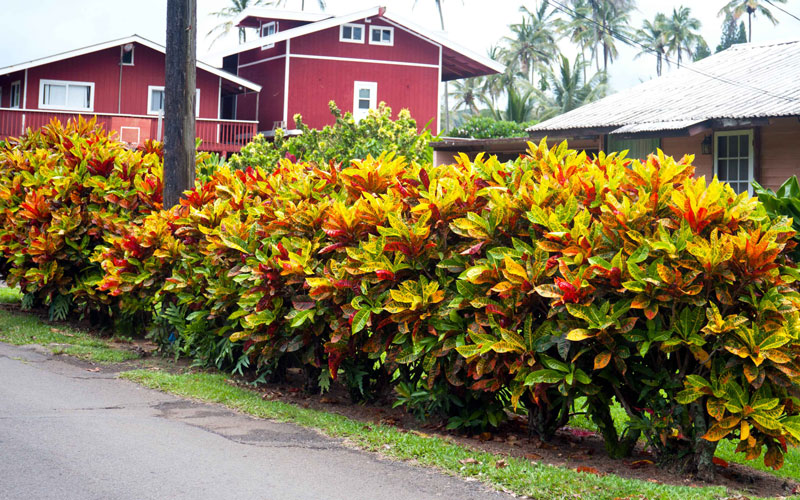
• Family: Euphorbiaceae (what an incredibly big and rich plant family!)
• Native home: Malaysia, Sri Lanka, Southern India
• Mature height and width: 3 to 6 ft.
• Soil preference: Highly organic, well-draining
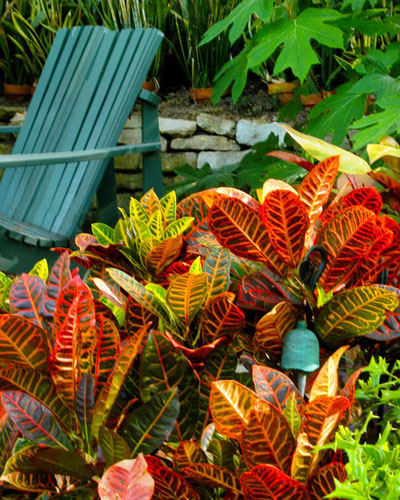
• Water needs: Consistently moist – never soggy and never dry to the point of wilting
• Light requirements indoors: Brightest light you have in your house
• Light requirements outdoors: Bright shade or morning sun and afternoon shade.
• Foliage colors: Green, red, yellow, orange, burgundy, pink, cream. Colors are more intense in brighter light. Leaves shift to all-green when grown in dark conditions.
• Propagated: Cuttings (difficult in home-garden conditions); layering
• Pest problems: Mealybugs, spider mites, scale insects
• Other problems: Leaves shift to solid green in low-light conditions. Leaves drop in prolonged low light or after plants are allowed to get too dry.

